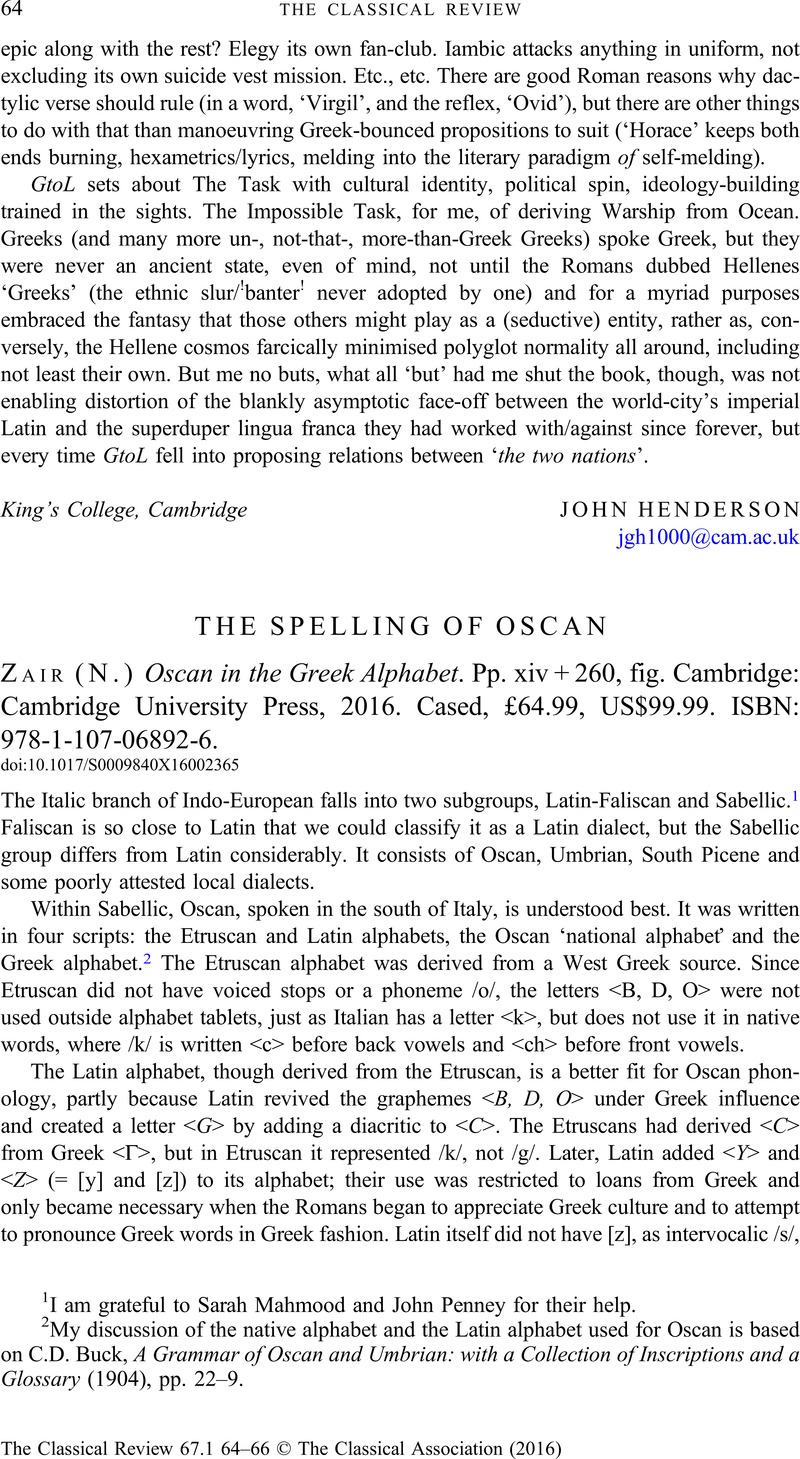Article contents
THE SPELLING OF OSCAN - (N.) Zair Oscan in the Greek Alphabet. Pp. xiv + 260, fig. Cambridge: Cambridge University Press, 2016. Cased, £64.99, US$99.99. ISBN: 978-1-107-06892-6.
Published online by Cambridge University Press: 12 December 2016
Abstract

- Type
- Reviews
- Information
- Copyright
- Copyright © The Classical Association 2016
References
1 I am grateful to Sarah Mahmood and John Penney for their help.
2 My discussion of the native alphabet and the Latin alphabet used for Oscan is based on Buck, C.D., A Grammar of Oscan and Umbrian: with a Collection of Inscriptions and a Glossary (1904), pp. 22–9Google Scholar.
3 Occasionally, double spellings occur elsewhere. They indicate vowels that are long because they are the result of compensatory lengthening, or because the word is a loan from Latin, where vowel length remained distinctive in all positions.
4 Alternatively, <iu> might indicate that the preceding consonant is palatalised, without changes in vowel quality.
5 The fact that [p] is epenthetic is clear from the Latin equivalent of the name, Numerius, which still has a dative NVMASIOI on the fibula Praenestina. Oscan did not have rhotacism and syncopated internal vowels, giving rise to [ms] and then [mps].
- 1
- Cited by





